|
|
THE ASHES
White Ash, Green Ash, Black Ash
Oleaceae - The Olive Family
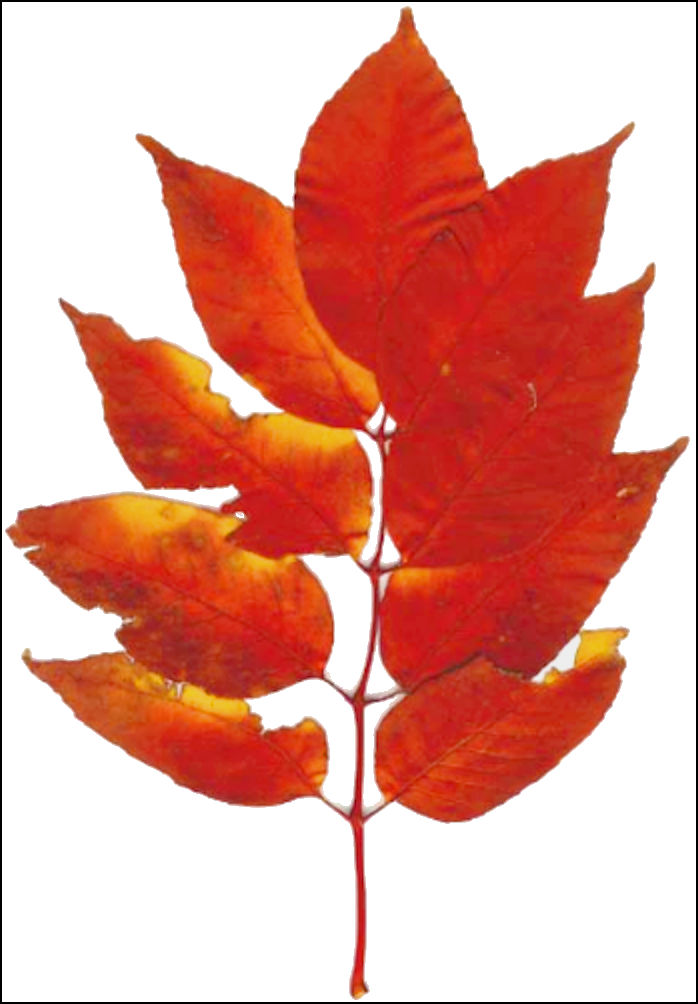 World-wide,
the olive family has between 22 and 30 genera
with over 400 species. Most are not trees. Lilacs, forsythias, privet, and
jasmine are also members of the Oleaceae, as are olives. Most grow in the northern
hemisphere. The ashes are all oppositely-branched
and have compound
leaves. They all have fruits called "samaras", which are like one-winged
helicopters from the maple family. Twigs are stout and relatively few, giving the crown a "dead look" when the leaves are
off. The ashes look similar to each other. Distinguishing characteristics are
leaflet stalks, lateral buds, branching form, general appearance, and habitat. Most of the ash in Michigan has been killed by the emerald ash borer.
World-wide,
the olive family has between 22 and 30 genera
with over 400 species. Most are not trees. Lilacs, forsythias, privet, and
jasmine are also members of the Oleaceae, as are olives. Most grow in the northern
hemisphere. The ashes are all oppositely-branched
and have compound
leaves. They all have fruits called "samaras", which are like one-winged
helicopters from the maple family. Twigs are stout and relatively few, giving the crown a "dead look" when the leaves are
off. The ashes look similar to each other. Distinguishing characteristics are
leaflet stalks, lateral buds, branching form, general appearance, and habitat. Most of the ash in Michigan has been killed by the emerald ash borer.
 WHITE
ASH (Fraxinus americana)
WHITE
ASH (Fraxinus americana)
Other
Names: Biltmore Ash
Key ID Features: Leaves, Opposite Branching, Twigs, Bark
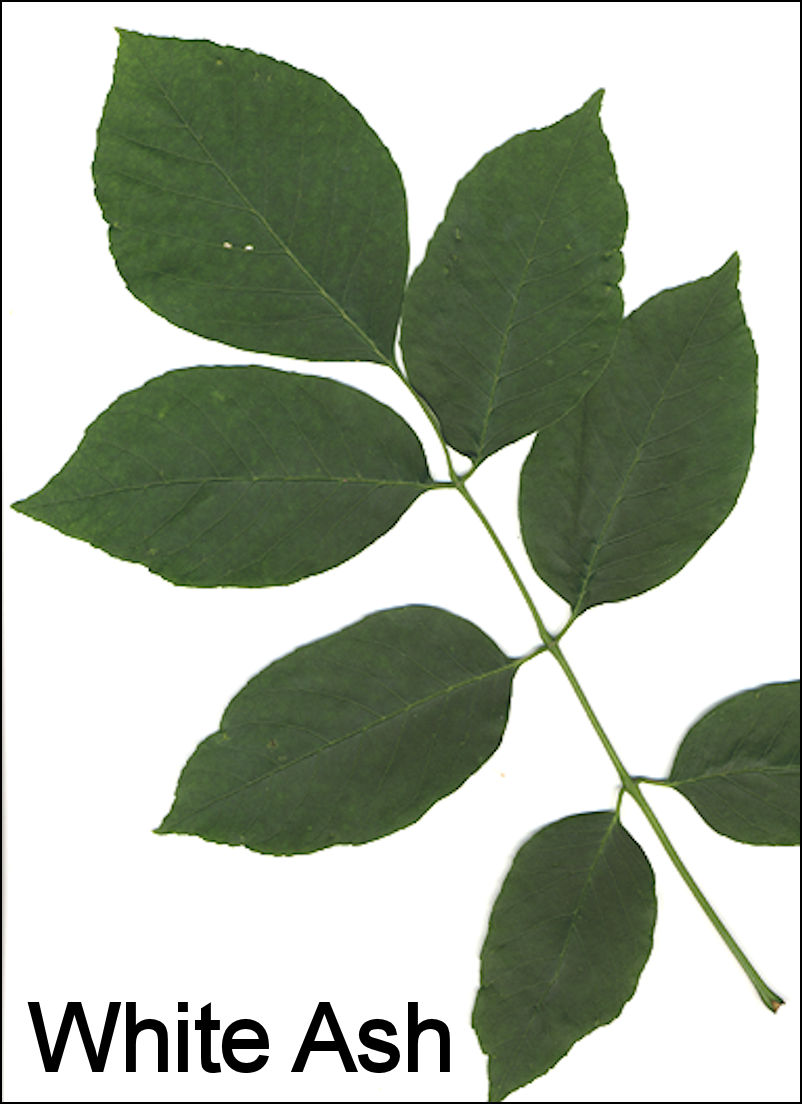
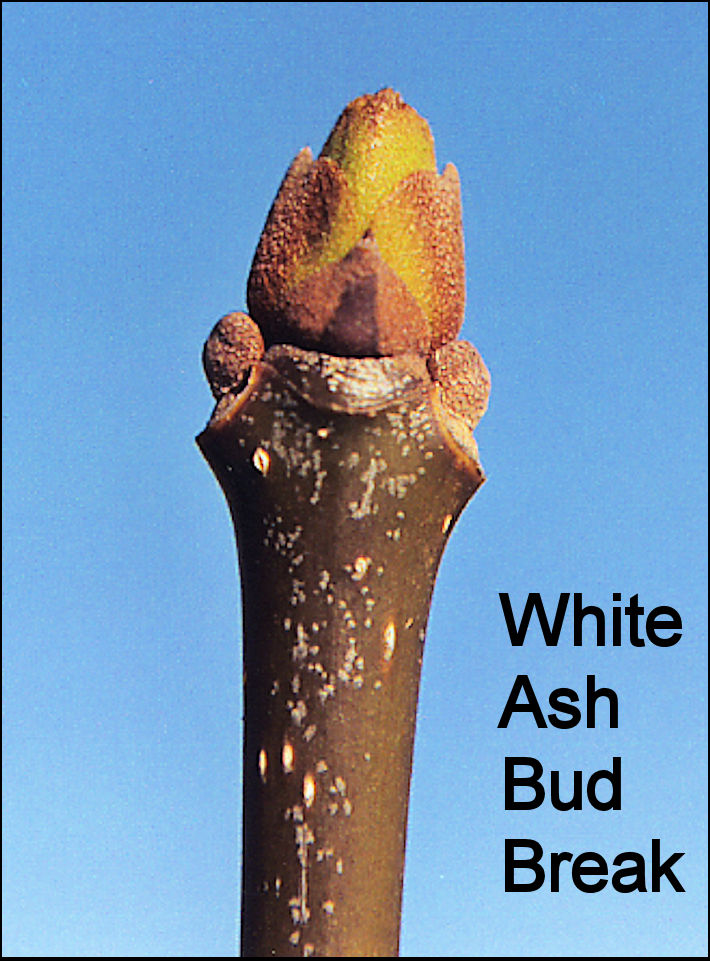
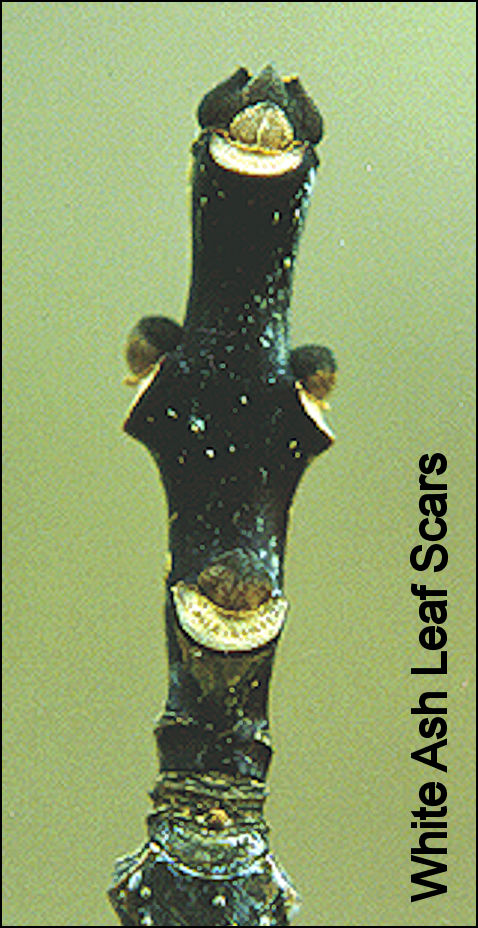
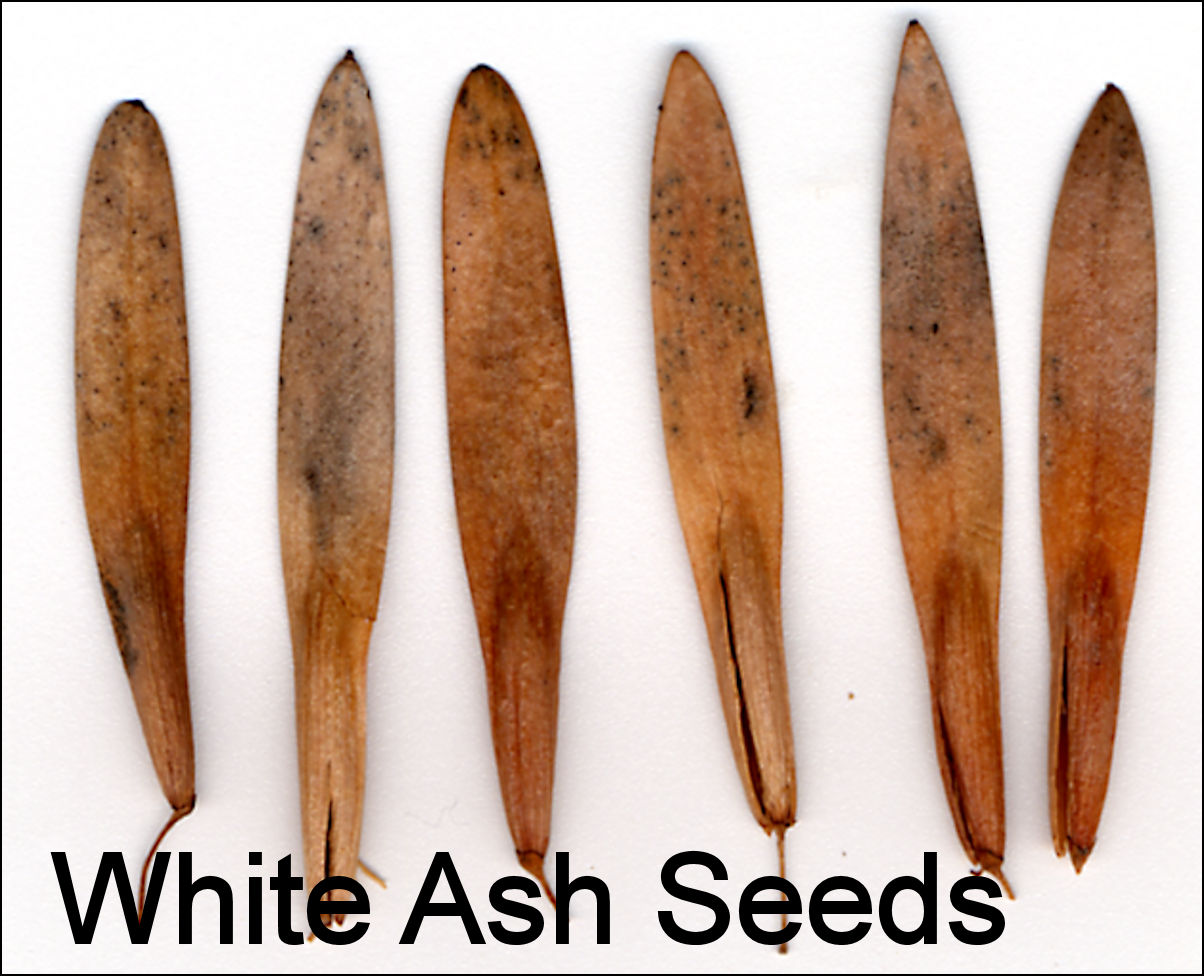
White ash LEAVES are
8-12 inches long with 5-9 STALKED leaflets. The leaf margins have broad, shallow
teeth. BRANCHING is opposite.
Twigs are stout. The
first set of side BUDS are close to the chubby, brown terminal bud. The top of the leaf scar forms a deep "U"
or smile. FRUITS are about 1-2 inches long and a quarter-inch wide. BARK is
light gray on young trees and thick, narrow-ridged,and firm on older trees. The
trunks grow tall and well-formed, making ash a rather satisfying find in the woods.
HEIGHTS will reach 70-80 feet with 2-3 foot diameters. White ash is a MINOR PART of
northern hardwoods and other upland hardwood forest types. Common pests: fall webworm, gypsy moth, cankerworms, emerald ash borer, ash dieback.
 GREEN
ASH (Fraxinus pennsylvanica)
GREEN
ASH (Fraxinus pennsylvanica)
Other
Names: Red Ash, White Ash, Swamp Ash, or Water Ash
Key ID Features: Leaves, Opposite Branching, Twigs, Bark
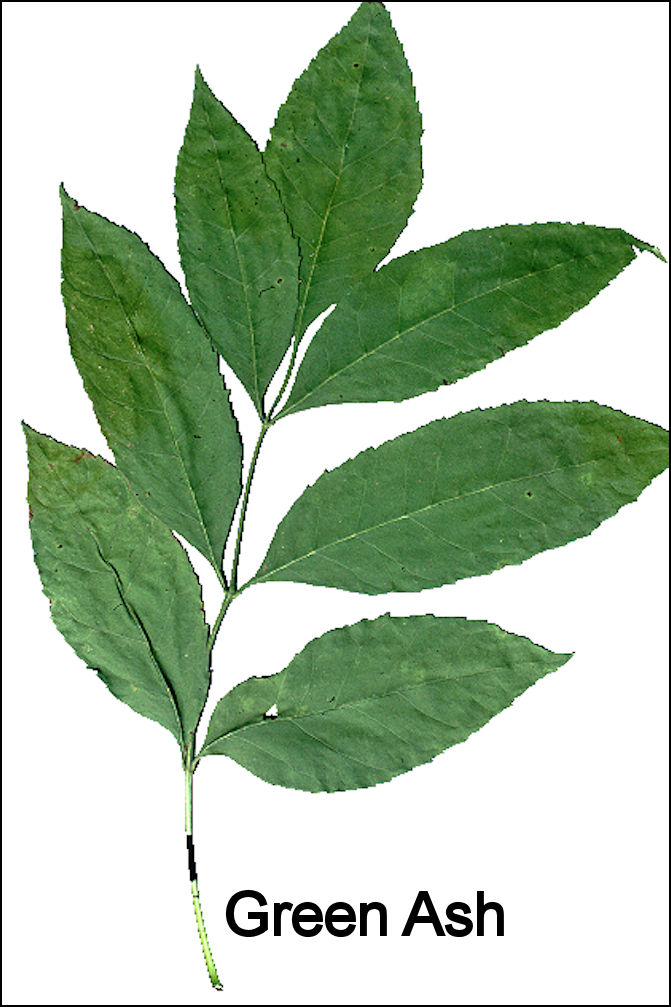
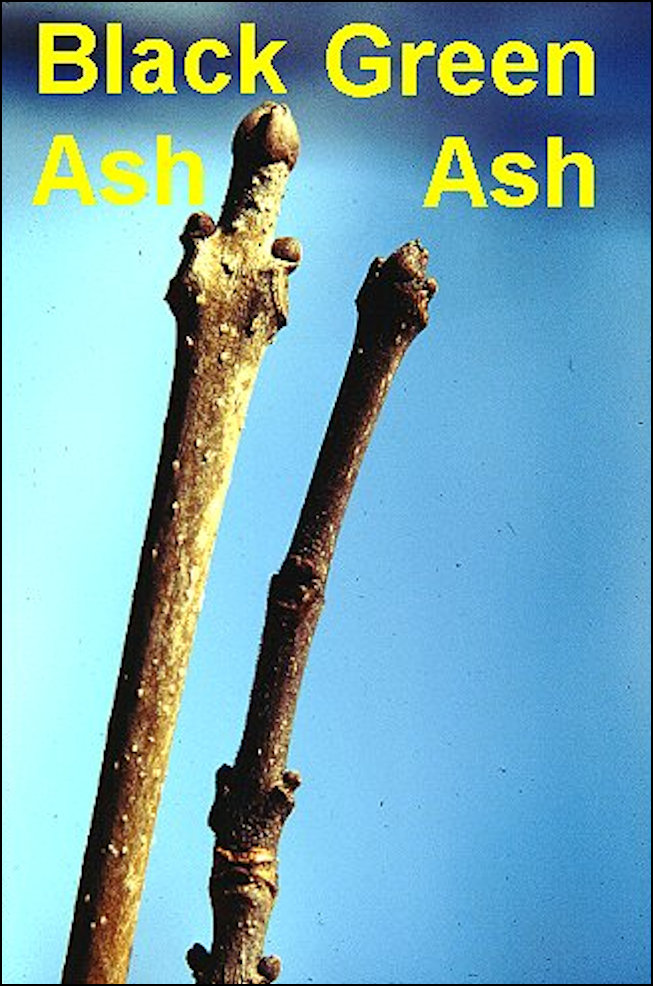
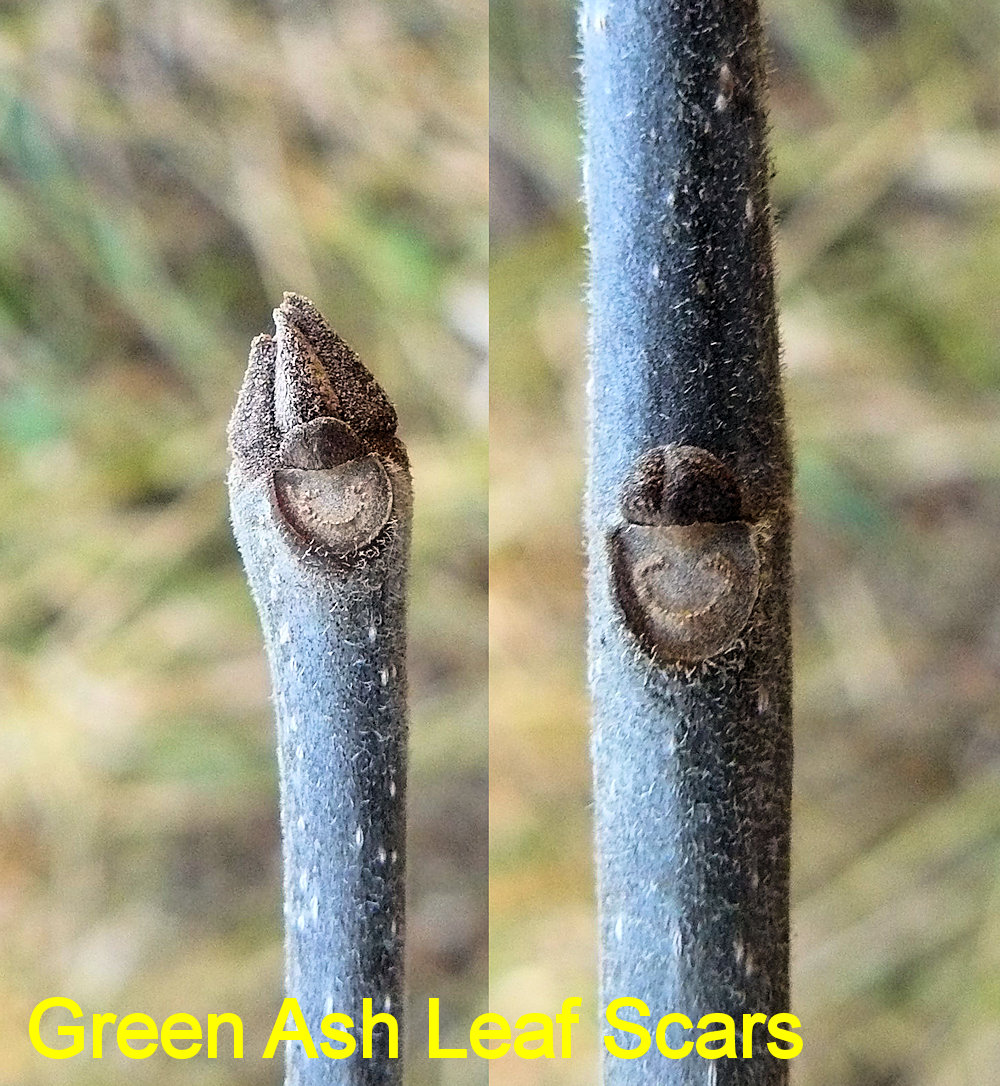
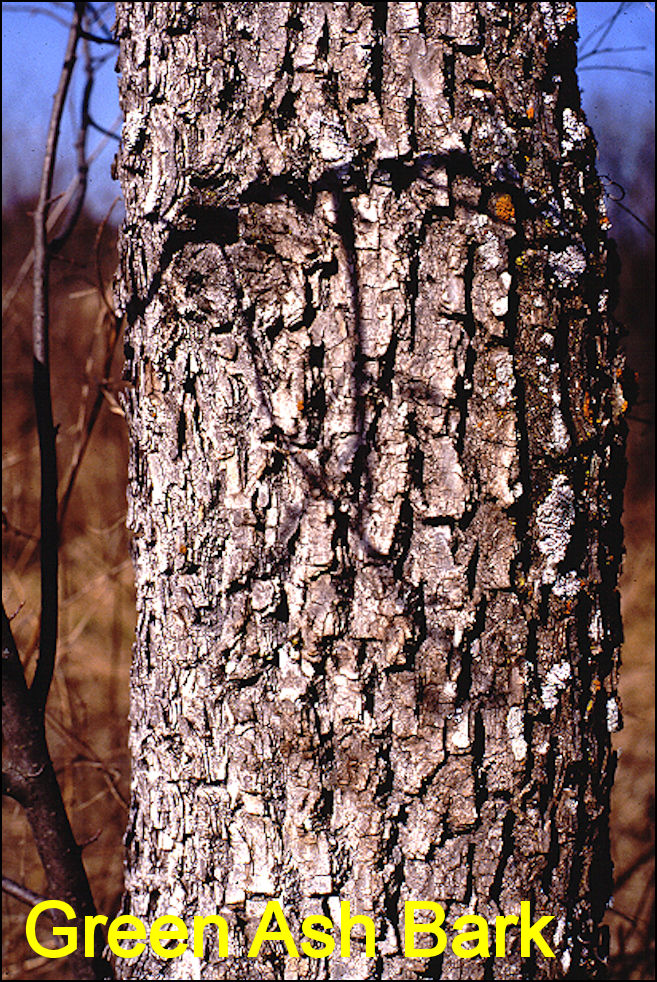
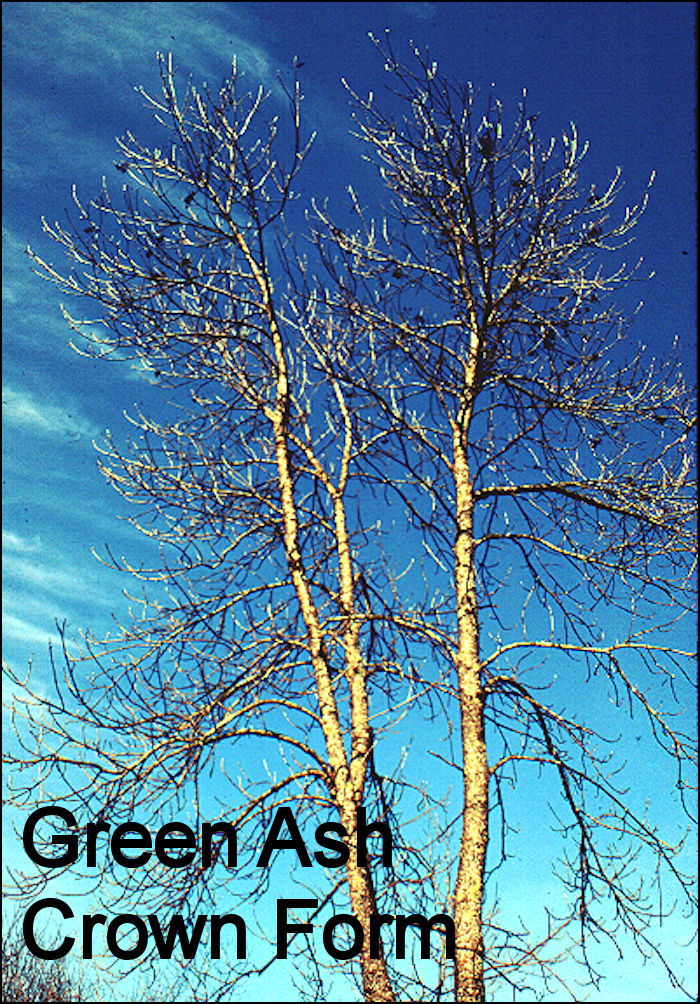
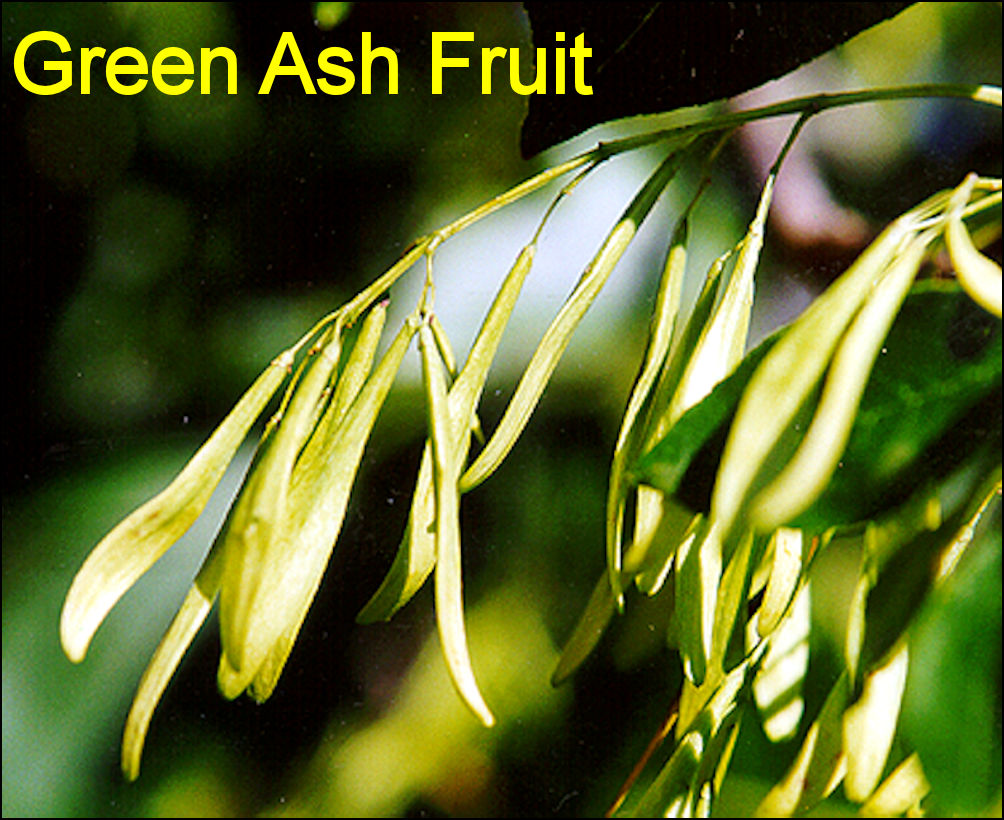
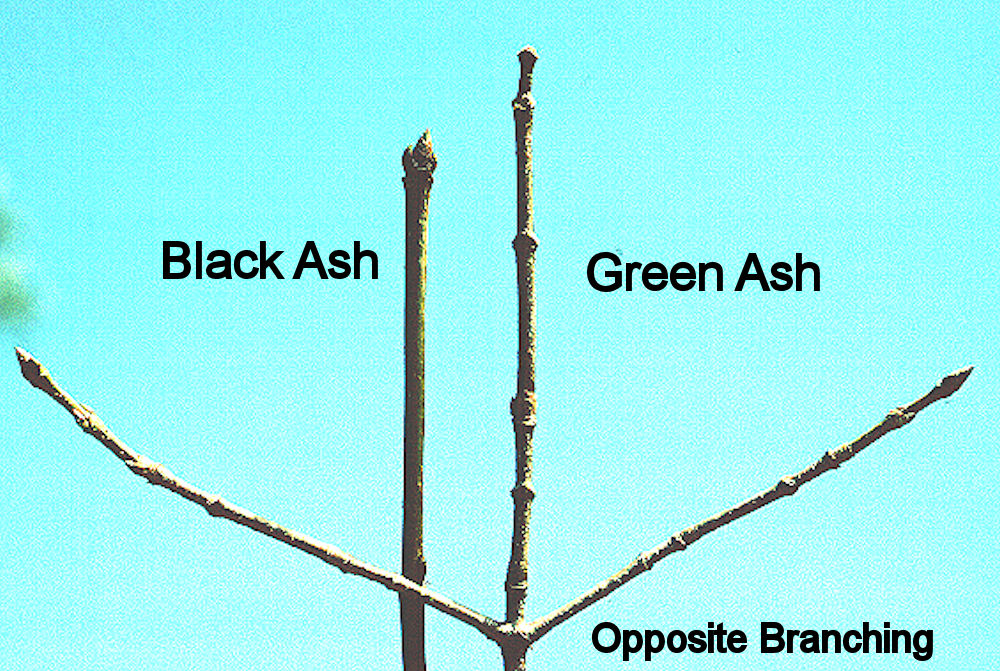
Green ash LEAVES are very
similar to white ash. The leaves are 6-9 inches long with 7-9 leaflets. Compared to
white ash, green ash leaves are usually shorter and with one less pair of
leaflets. The first set of LATERAL BUDS are tight against the terminal bud, and the top of the leaf scar is straight across. The
tips of the branches tend to be much more "flattened" than other ashes.
BRANCHING is opposite and somewhat droopy. TWIGS are less stout thatwhite or black ash. The GENERAL
APPEARANCE of green ash is much scruffier than white ash. Heights reach only
50-60 feet with diameter rarely over two feet. The BARK has distinct horizontal
cracks and the ridges tend to be somewhat platelike. The bark is not as firm as white ash.
Green ash typically grows near water courses, along shorelines,and along roads. It's
usually fairly open grown. Common pests: fall webworm, gypsy moth, cankerworms, emerald ash borer, ash dieback, beavers.
 BLACK
ASH (Fraxinus nigra)
BLACK
ASH (Fraxinus nigra)
Other
Names: Basket Ash, Brown Ash, Hoop Ash, Swamp Ash, or Water Ash
Key ID Features: Leaves, Opposite Branching, Twigs, Bark, Habitat
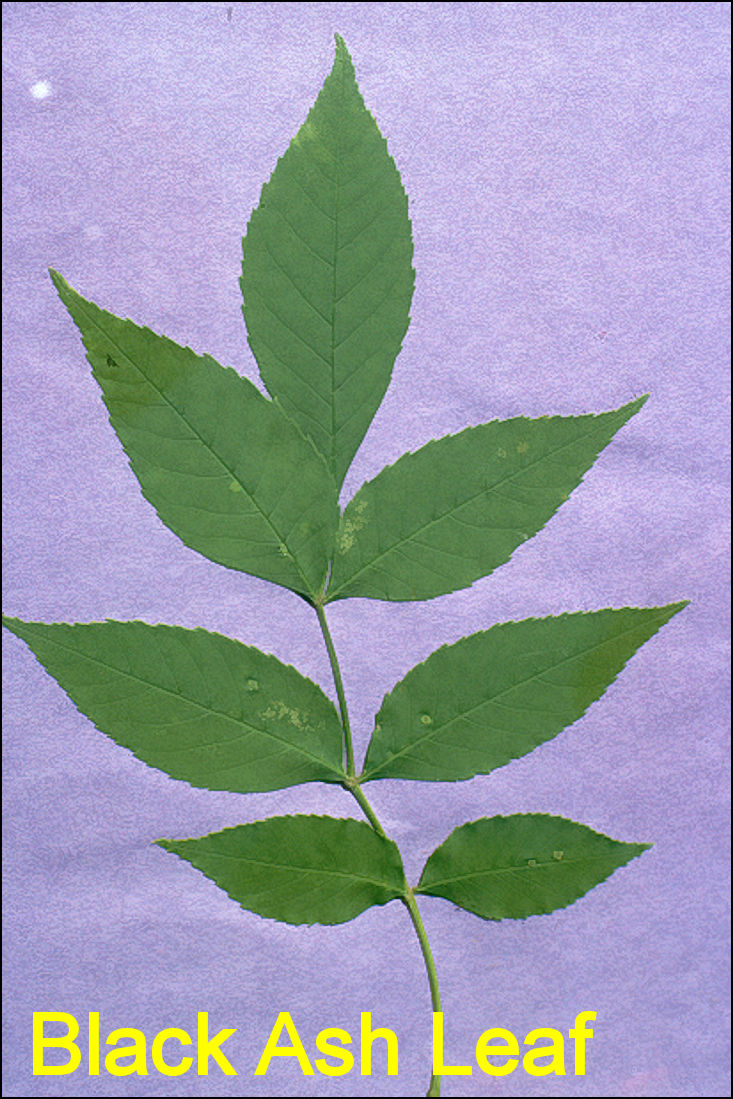
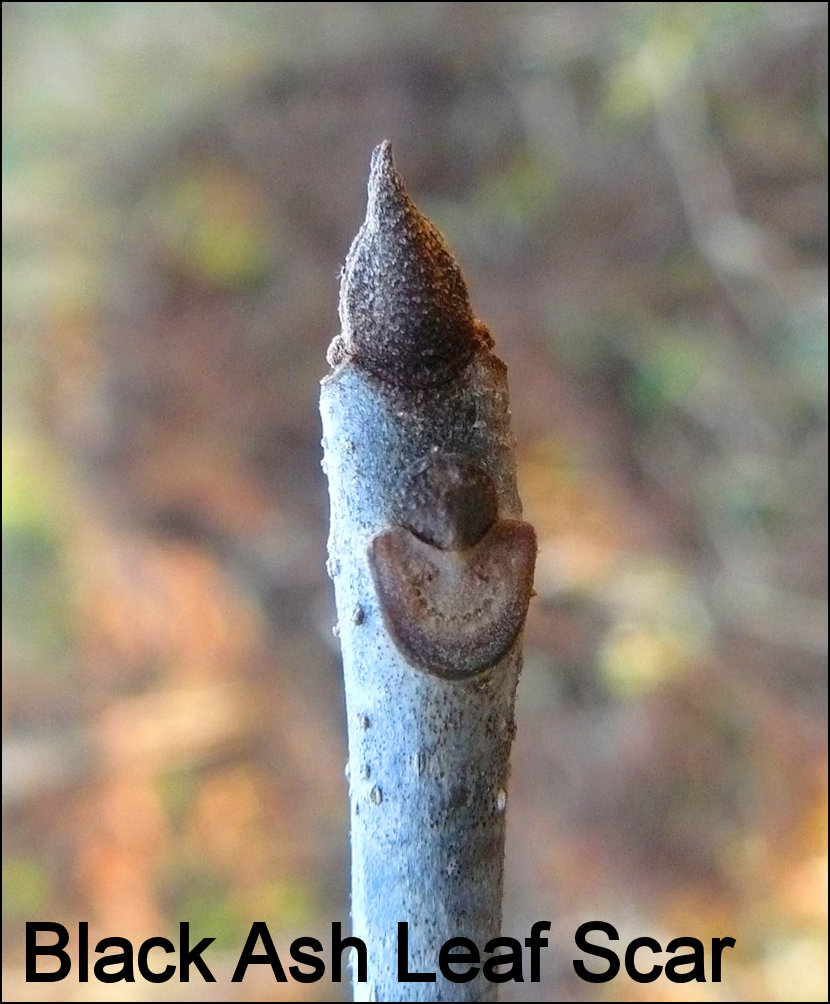

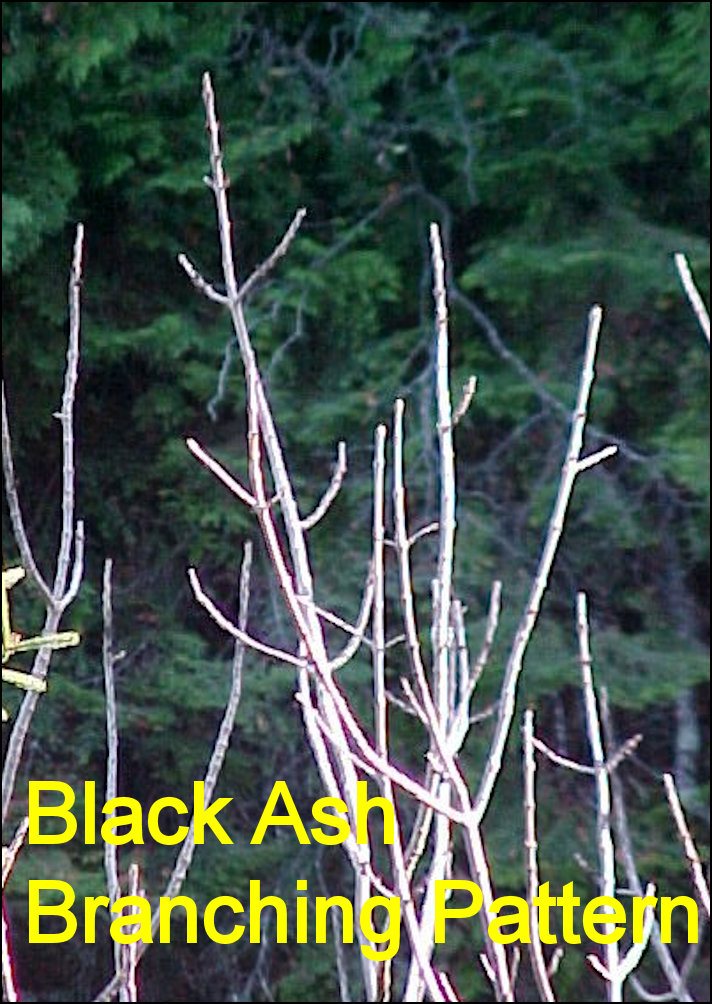
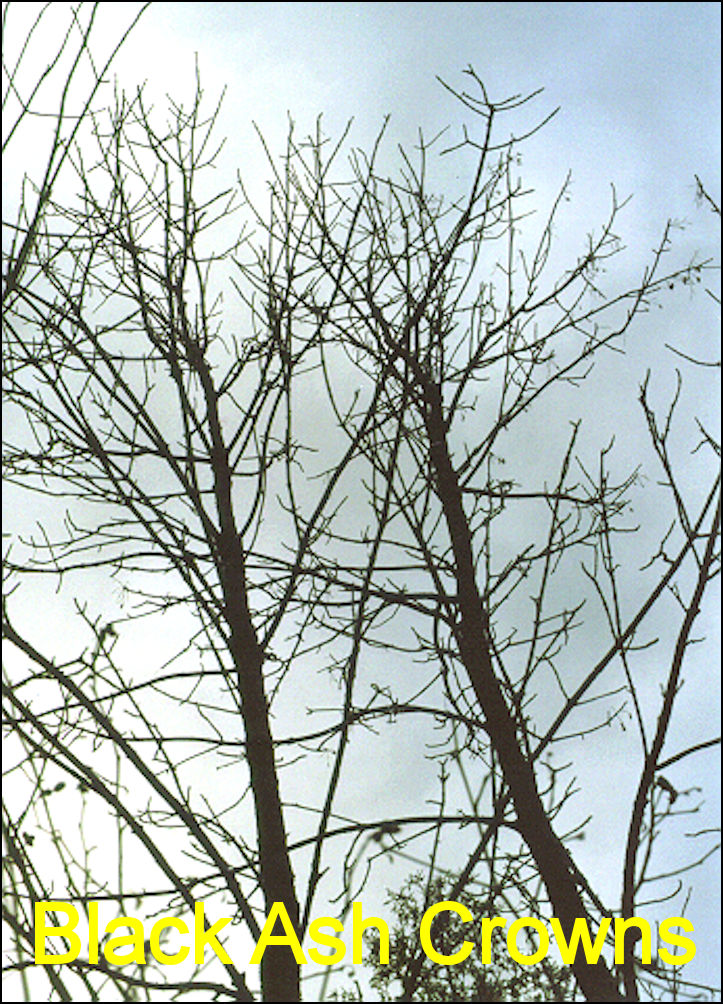
Black ash LEAVES
have 7-11 leaflets without stalks. Leaves are 8-12 long. The first
set of side BUDS are usually at least a 1/4 inch from the terminal bud but not always. The top of the
leaf scar is slightly
notched. TWIGS are the stoutest
among the ashes. BRANCHING is opposite and upright. Black ash usually occurs
in rich swamps on the floodplains of slow-moving streams. It does not usually get far from
these wetland area. It grows 60-80 feet in height with diameters of 1-2 feet. Common pests: fall webworm, gypsy moth, cankerworms, emerald ash borer, ash dieback, beavers.
Click on the blue to return to the Deciduous Summer Key or the Deciduous Winter
Key.
Click HERE to return to the home page.
A note about the images on this website, click here.
This site created and maintained by Bill Cook, MSU Extension Forester for the Upper Peninsula of Michigan. Editing and modification is ongoing. Submit suggestions, questions, and corrections to cookwi@msu.edu or call 906-786-1575.